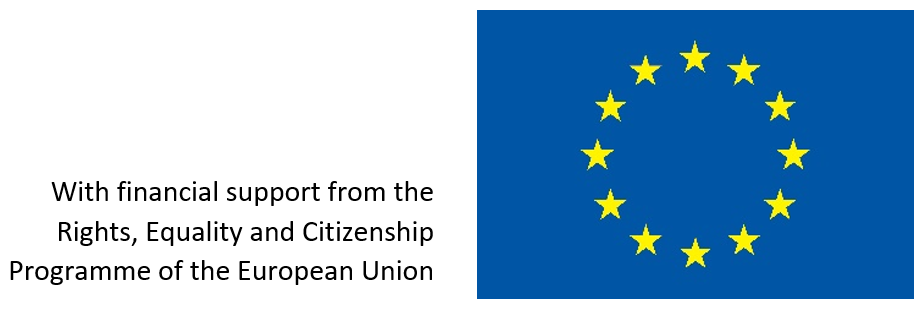In the past few days, you may probably have come across the picture of Dr Katie Bouman, the brilliant 29-year-old computer scientist who developed a crucial algorithm that helped produce the first ever image of a black hole. Even though the MIT graduate underlined that this scientific breakthrough was the result of successful teamwork, her thrilled expression in front of the computer with the fully-rendered black hole image has become one of the symbols of women’s achievements in STEM. In a Tweet shared by the MIT Labs’ profile, the photo of Bouman showing stacks of hard drives of the black hole image data was compared to the famous 1969 picture of Margaret Hamilton, the computer scientist who helped write the code that sent the first men to the moon.

Women’s achievements in STEM fields (the acronym stands for science, technology, engineering, and mathematics) are now gaining more visibility than ever. In fact, some might say that this looks like a great moment for women in science. Stories of intelligent and ambitious women working in STEM are trending in the media; from children’s books to movies, bringing to light the biographies of “hidden figures” such as Katherine Johnson, Annie Cannon, Ada Lovelace and other great scientific minds throughout history. The wider public seems to love their stories and to cheer their accomplishments, considering them great examples for young women and girls who can now see more positive female characters that they identify with.
However, celebrating their achievements in the sciences does not erase the harsh reality behind their work: women in STEM fields face persistent challenges and biases that limit their influence and growth, and may dissuade other women from pursuing STEM professions despite clear cultural encouragement at large. In other words, women in 2019 are still having a hard time being recruited, making careers and retaining their job in STEM fields.
SCIENCE AS A “MALE CAREER”
At the root of the problem of female underrepresentation in STEM, there is a widespread perception of the field as masculine. At school, there is a persistent belief among teachers and students that girls are more hard-working, but have less talent at STEM, while boys are lazy, but more talent at STEM. There is also the belief that STEM asks for innate talent (which is why boys are supposedly better at STEM). Research has shown that, as early as in elementary school, children are aware of these stereotypes and can express stereotypical beliefs about which science courses are suitable for females and males. (1) Furthermore, girls and young women have been found to be aware of, and negatively affected by, the stereotypical image of a scientist as a man and the lack of references to female scientists in textbooks.
This has in fact a major impact on reality. A report published by the European Commission in 2018 highlights that gender inequality is still rampant in STEM fields (2):
- Only a minority of women choose to pursue a STEM degree. As an example, data from the UK show that women account for 15% of Engineering graduates, 19% of Computer Science graduates, and 38% of Maths graduates. (3) As a consequence, STEM careers remain distinctively male dominated.
- In addition, when it comes to leave the university and start working, only one third of women is able to find a job in STEM, compared to one in two men with the same qualifications. If we consider the above mentioned data on STEM graduates, it is clear why there are relatively few female STEM women role models.
- Women tend to leave the profession at a higher rate than men (the so-called “pipeline effect”). Across the EU, only 20% of women aged 30+ holding ICT-related degrees decide to stay in the industry. Research on women’s motives for leaving STEM jobs points to the effects of “workplace culture” (see below).
THE DIFFICULTIES OF BALANCING WORK AND LIFE
In February 2019, the International journal of Science “Nature” published an article about how parenthood affects career trajectories of STEM graduates in the United States. (4) The study revealed that parenthood is an important driver of gender imbalance in STEM employment, and that having children is still noted as a barrier to women’s chances of working and progressing in STEM careers, whereas this is less of an issue for men. As the figures show, nearly half of female scientists leave their full-time job after the birth of their first child. By contrast, only 23% of new fathers leave or cut their working hours.

Around half of the new parents cited family-related reasons as a motive for leaving. Erin Cech, the sociologist that conducted the study, commented: “There is a cultural expectation in STEM that if you have responsibilities outside of your full-time work, you aren’t as committed a scientist. […] STEM work is often culturally less tolerant and supportive of caregiving responsibilities than other occupations. So mothers [after their first child] may feel squeezed out of STEM work and pulled into full-time work in non-STEM fields”.
SEXUAL HARRASSMENT, SEXIST AND DISCRIMINATORY ATTITUDES
When it comes to sexual harassment and sexual assault in STEM fields, the evidence is clear. According to statistics provided by the non-profit organization “Women who Tech”, more than a half of the interviewed women said they had experienced harassment in the workplace; in 72% of cases, the harassment had sexual nature. Moreover, 13% of female respondents were propositioned for sex in exchange of a promotion. (5)
These percentages grow when we consider women trainees: another study found that they are the primary targets of sexual harassment and assault, as 70% of them – including graduate students and postdoctoral scholars – reported being sexually harassed. Their perpetrators are predominantly senior to them professionally within the research team; sometimes, they are co-workers or peers. (6) This culture has the ultimate effect of driving women out of science and other tech careers. (7)

Overall, women often feel unwelcome in science. Apart from sexual harassment, women experience gender discrimination on the job and flagrant sexism. In October 2018, a scientist from CERN (the European Organization for Nuclear Research) made headlines when he declared at a scientific conference that “physics was invented and built by men, it’s not by invitation”. (8) He attracted widespread criticism and CERN suspended him, but the fact that he had the confidence to make such an assertion speaks volumes about the sexism in science. Going back to Dr Bouman, she herself became object of a sexist backlash on the internet last week, when trolls on Reddit tried to belittle her role in creating the algorithm, saying that it was in fact two colleagues who did most of the job and who should have taken credit for it. (9)
SO, HOW CAN WE REDUCE THE GAP?
While women like Bouman, her peers and predecessors will always be seen as shining examples of what women can do when involved in higher scientific projects, it may take subtler, more consistent changes to turn the tide. Recognition and visibility of women’s contributions in STEM are definitely important, but the main issue remains how to attract women into pursuing STEM careers and, most importantly, how to retain them once they’re in. This could only be done by fighting biases around women in science, and by creating a positive work environment and a progressive culture for women.
Professional Employability Adviser for Computing at Sheffield Hallam University, Anjlee Gupta, suggests five ways to bridge the gender gap in STEM (10):
1. Fostering a female friendly environment by investing in equality and diversity training for all staff, by raising awareness of the issue across the company and by creating forums or space for people to talk about and tackle the issues openly;
2. Ensuring provision of relevant training and development programs which are inclusive of females and offer opportunities to progress within the company;
3. Distributing work and opportunities for research projects equally;
4. Offering equal and competitive benefits such as equal salary for men and women based on the grade they at, flexibility in working hours, offering a family friendly culture and other useful perks and engagement activities that can help to improve motivation levels and job satisfaction;
5. Increasing avenues of communication by building networks for females. This will make visible female role models within the organization, allow women to build mentoring relationships as well as being able to share good news stories and open forums to talk about overcoming obstacles and challenges.
Together, these changes could help eradicate the hardened perceptions of STEM women, whether they be NASA heroes, working mothers or one of the thousands of other women whose names will never become famous, who nonetheless deserve to pursue their work in an environment of parity and respect.
By Valentina Canepa, WAVE Intern
Photo by Ani Kolleshi on Unsplash
Sources
(1) Why So Few? Women in Science, Technology, Engineering, and Mathematics (2010), research report available at https://www.aauw.org/resource/why-so-few-women-in-science-technology-engineering-mathematics/
(2) European Commission (2018), “2018 Report on equality between women and men in the EU”, available at http://ec.europa.eu/newsroom/just/document.cfm?doc_id=50074
(3) Data available at https://www.stemgraduates.co.uk/women-in-stem
(4) Nature, “Nearly half of US female scientists leave full-time science after first child”, 19 February 2019, available at https://www.nature.com/articles/d41586-019-00611-1
(5) Women who Tech (2017), “Tech and start-up culture survey”, available at https://www.womenwhotech.com/resources/tech-and-startup-culture-survey
(6) Survey of Academic Field Experiences (2014), “Trainees Report Harassment and Assault”, available at https://journals.plos.org/plosone/article?id=10.1371/journal.pone.0102172
(7) The Atlantic, “How Women Are Harassed Out of Science”, 25 July 2016, available at https://www.theatlantic.com/science/archive/2016/07/how-women-are-harassed-out-of-science/492521/
(8) BBC, “Cern scientist: ‘Physics built by men – not by invitation”, 1 October 2018, available at https://www.bbc.com/news/world-europe-45703700
(9) The Daily Mail, “Male scientist who helped capture the first photograph of a black hole defends Katie Bouman after she was attacked by sexist trolls who say she took the credit for her team”, 12 April 2019, available at https://www.dailymail.co.uk/news/article-6917089/Male-scientist-helped-capture-black-hole-photo-defends-Katie-Bouman-sexist-trolls.html
(10) Anjlee Gupta, “Are STEM employers doing enough to retain female talent?”, 28 August 2015, https://www.linkedin.com/pulse/stem-employers-doing-enough-retain-female-talent-anjlee-gupta
(11) CNN, “We cheer on women in the sciences, but recruiting and retaining them is still a different story”, 12 April 2019, available at https://edition.cnn.com/2019/04/12/us/scientist-women-retention-sci-trnd/index.html






